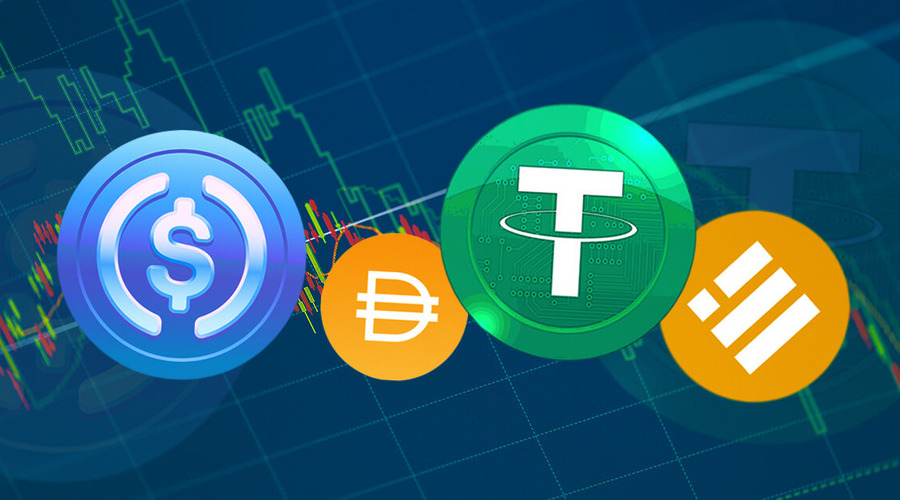Stablecoin Adoption Rates and Their Potential Impact on Traditional Financial Institutions

Stablecoin Adoption Rates and Their Potential Impact on Traditional Financial Institutions
As the popularity of cryptocurrencies continues to grow, stablecoins have emerged as a new type of digital currency that has gained widespread attention in recent years. Unlike other cryptocurrencies, stablecoins are pegged to a stable asset, such as a fiat currency, to provide stability and reduce volatility. The adoption of stablecoins has significant implications for traditional financial institutions, as they offer many advantages over traditional payment systems. In this article, we will explore the adoption rates of stablecoin and its potential impact on traditional financial institutions.
What are Stablecoins?
Stablecoins are a type of cryptocurrency that is designed to maintain a stable value being pegged to an asset, such as a fiat currency, commodity, or cryptocurrency. The goal of stablecoins is to provide a stable and reliable means of payment and reduce the volatility of other cryptocurrencies, such as Bitcoin and Ethereum. Stablecoins can be divided into three main categories: fiat-backed, commodity-backed, and algorithmic stablecoins.
Adoption Rates of Stablecoin
Stablecoins have been growing in popularity in recent years, with many new stablecoins being launched. The total market capitalization of stablecoins has increased from around $2 billion in January 2019 to over $120 billion in April 2023. The growth in stablecoin adoption can be attributed to several factors, including the need for a stable and reliable payment system, the growth of decentralized finance (DeFi), and the increasing demand for cross-border payments.
Advantages of Stablecoin Over Traditional Payment Systems
Stablecoins offer several advantages over traditional payment systems, including faster transaction times, lower fees, and greater transparency. Traditional payment systems can be slow and expensive, particularly for cross-border transactions, and they often involve intermediaries, which can increase costs and reduce transparency. Stablecoins, on the other hand, can be transferred instantly and at a lower cost, making them an attractive alternative for individuals and businesses.
Potential Impact on Traditional Financial Institutions
The adoption of stablecoins has the potential to disrupt traditional financial institutions offering a more efficient and transparent payment system. Stablecoins can reduce the need for intermediaries, such as banks and payment processors, and can offer faster and cheaper cross-border payments. This could lead to a reduction in the demand for traditional banking services, particularly in emerging markets, where traditional banking services can be expensive and inaccessible.
Types of Stablecoin
- Fiat-Backed Stablecoins: These stablecoins are backed a fiat currency, such as the US dollar or the Euro. The stablecoin issuer holds an equivalent amount of the fiat currency in reserve to ensure that the stablecoin maintains its value.
- Commodity-Backed Stablecoins: These stablecoins are backed a commodity, such as gold or oil. The stablecoin issuer holds an equivalent amount of the commodity in reserve to ensure that the stablecoin maintains its value.
- Algorithmic Stablecoins: These stablecoins use complex algorithms to maintain their value. For example, an algorithmic stablecoin may increase or decrease its supply in response to changes in demand to maintain its peg.
Use Cases for Stablecoin
- Cross-Border Payments: Stablecoins can be used for cross-border payments, as they offer faster and cheaper transactions than traditional payment systems.
- Decentralized Finance (DeFi): Stablecoins are a key component of the DeFi ecosystem, as they enable users to participate in DeFi protocols without being exposed to the volatility of other cryptocurrencies.
- Remittances: Stablecoins can be used for remittances, as they offer a low-cost and efficient means of sending money across borders.
Impact on Traditional Banking
- Reduced Intermediation: Stablecoins can reduce the need for intermediaries, such as banks and payment processors, as they enable users to transact directly with each other.
- Increased Competition: The adoption of stablecoins could lead to increased competition in the financial services industry, as new players enter the market to offer innovative payment solutions.
- Regulation: The growing adoption of stablecoins has prompted regulators to consider how to regulate these new financial instruments. Some jurisdictions have already introduced regulatory frameworks for stablecoins, while others are still in the process of developing them.
Risks and Challenges of Stablecoin
- Regulatory Uncertainty: The lack of regulatory clarity in the stablecoin market creates uncertainty for issuers and investors, as they are unsure of how stablecoins will be treated under existing regulations.
- Counterparty Risk: Stablecoins are only as stable as the asset that backs them. If the issuer mismanages the underlying asset, the stablecoin could lose value.
- Volatility: While stablecoins are designed to be stable, they are not immune to volatility. External factors, such as changes in the value of the underlying asset, could impact the stability of the stablecoin.
Conclusion
Stablecoins are a new type of digital currency that has gained widespread attention in recent years. The adoption of stablecoins has significant implications for traditional financial institutions, as they offer many advantages over traditional payment systems. However, stablecoins also come with some risks and challenges, and it is important for investors and regulators to be aware of these risks. Overall, stablecoins have the potential to transform the financial services industry, and it will be interesting to see how they continue to evolve in the coming years.
FAQs
Q: What is a stablecoin?
A: A stablecoin is a type of cryptocurrency that is designed to maintain a stable value relative to a traditional currency, such as the US dollar. This stability is achieved through various mechanisms, such as backing the cryptocurrency with reserves of the traditional currency.
Q: What is the potential impact of stablecoin adoption on traditional financial institutions?
A: Stablecoin adoption has the potential to disrupt traditional financial institutions providing an alternative means of payment and store of value that is decentralized, borderless, and accessible to anyone with an internet connection. This could lead to reduced reliance on traditional financial institutions, decreased transaction costs, and increased financial inclusion.
Q: How are stablecoins being used today?
A: Stablecoins are being used for a variety of purposes today, including as a means of payment, a store of value, and a means of facilitating cross-border transactions. They are also being used in decentralized finance (DeFi) applications, such as lending and borrowing platforms, as collateral and for yield farming.
Q: What are the risks associated with stablecoin adoption?
A: The risks associated with stablecoin adoption include potential regulatory challenges, the potential for stablecoins to be used for illicit activities, and the possibility of technical failures or hacks. Additionally, if stablecoins become widely adopted, they could create systemic risks to the broader financial system if they are not properly regulated and supervised.
Q: How are traditional financial institutions responding to stablecoin adoption?
A: Traditional financial institutions are responding to stablecoin adoption in different ways. Some are exploring the use of stablecoins themselves, while others are partnering with fintech startups that are developing stablecoin-based solutions. Additionally, some institutions are exploring the use of blockchain technology more broadly, including for settlement and clearing.
I’ve been involved with cryptocurrency for three years. I have been a vocal advocate for the people and an active part of the community. I am well-known for my book “Crypto Revolution: An Insider’s Guide to the Future of Money” and blog “The Crypto Chronicles.” In addition, I frequently contribute to CoinDesk, one of the top news websites for cryptocurrencies. I write as well as invest actively in a number of bitcoin initiatives.
